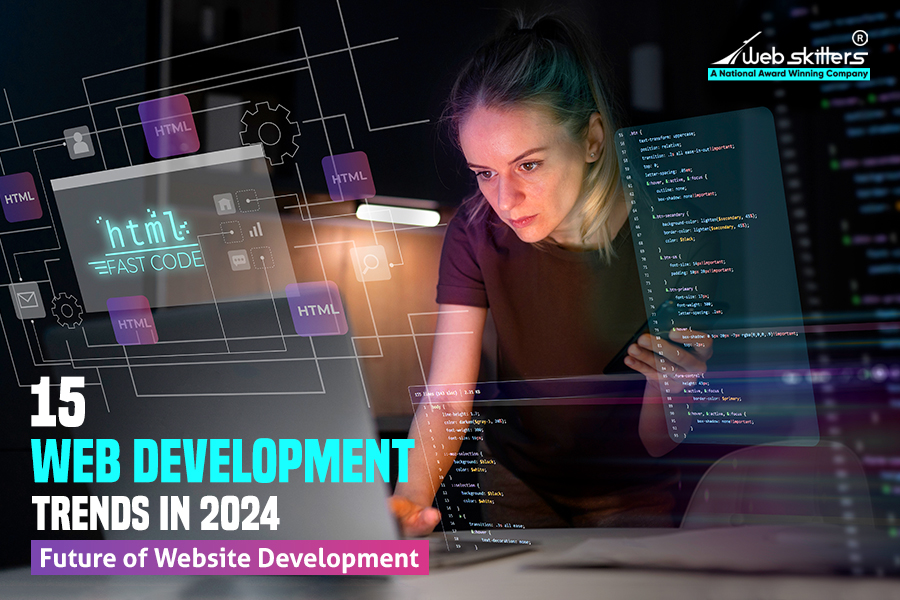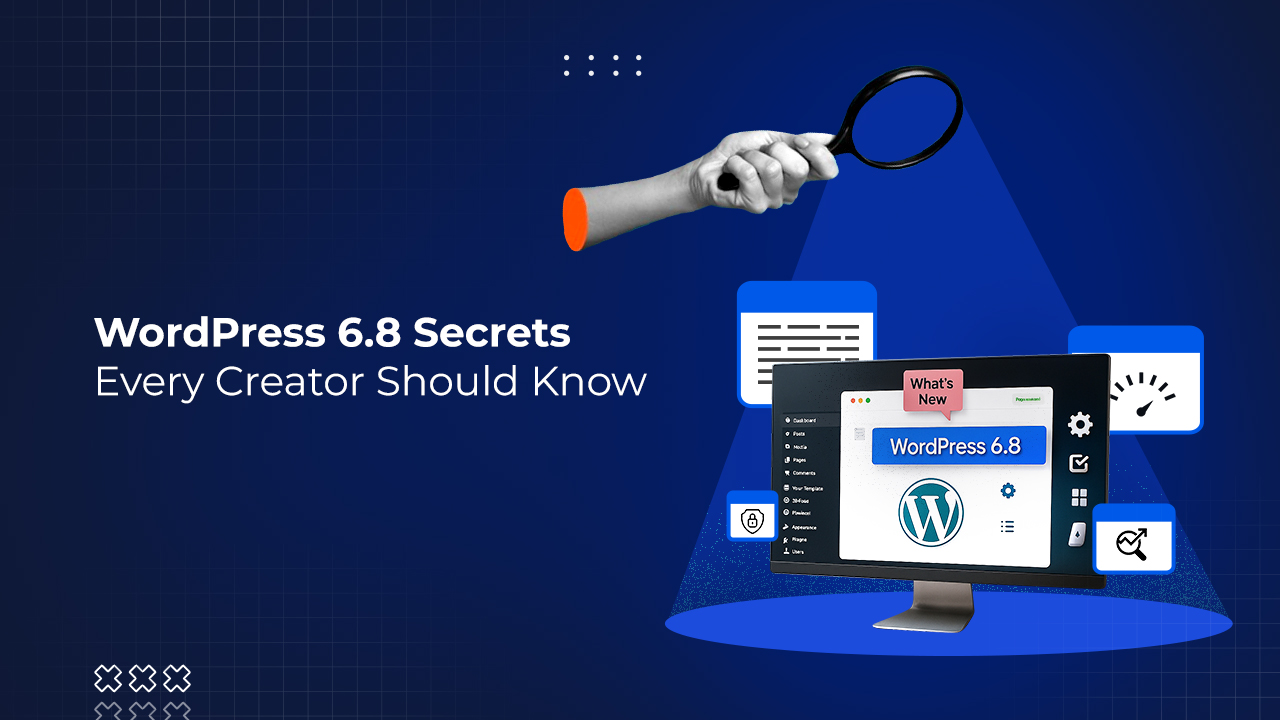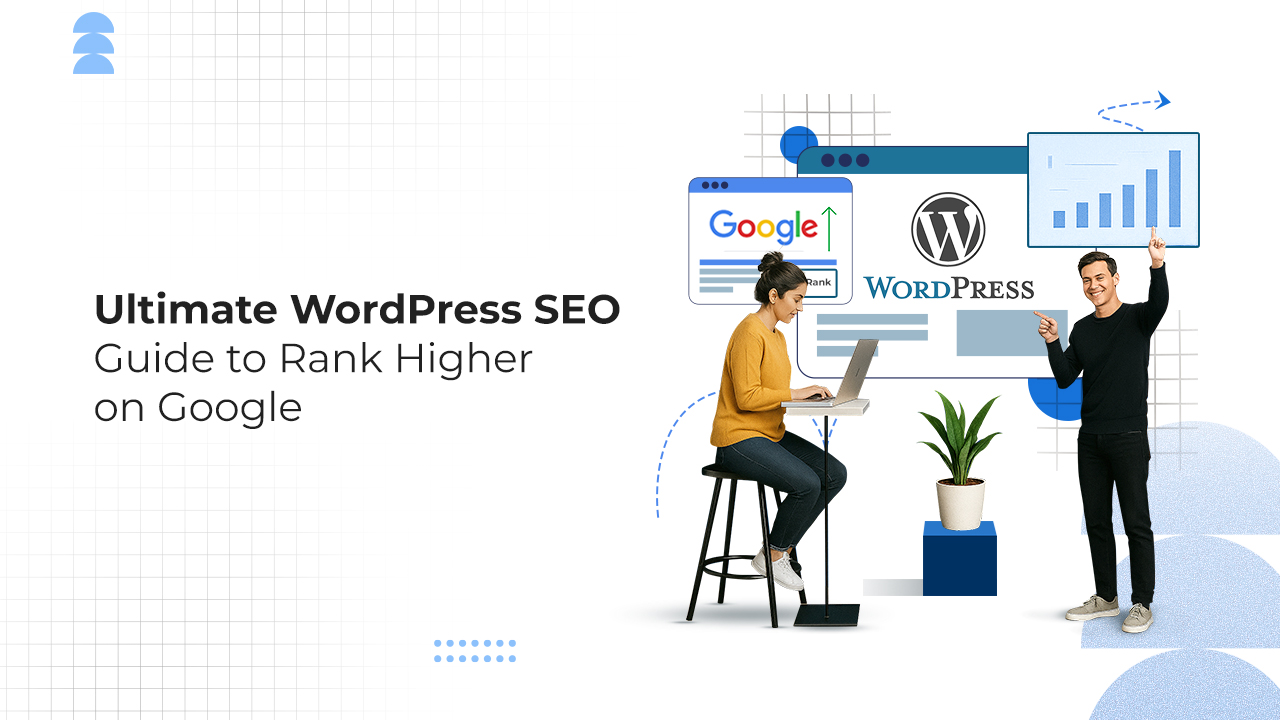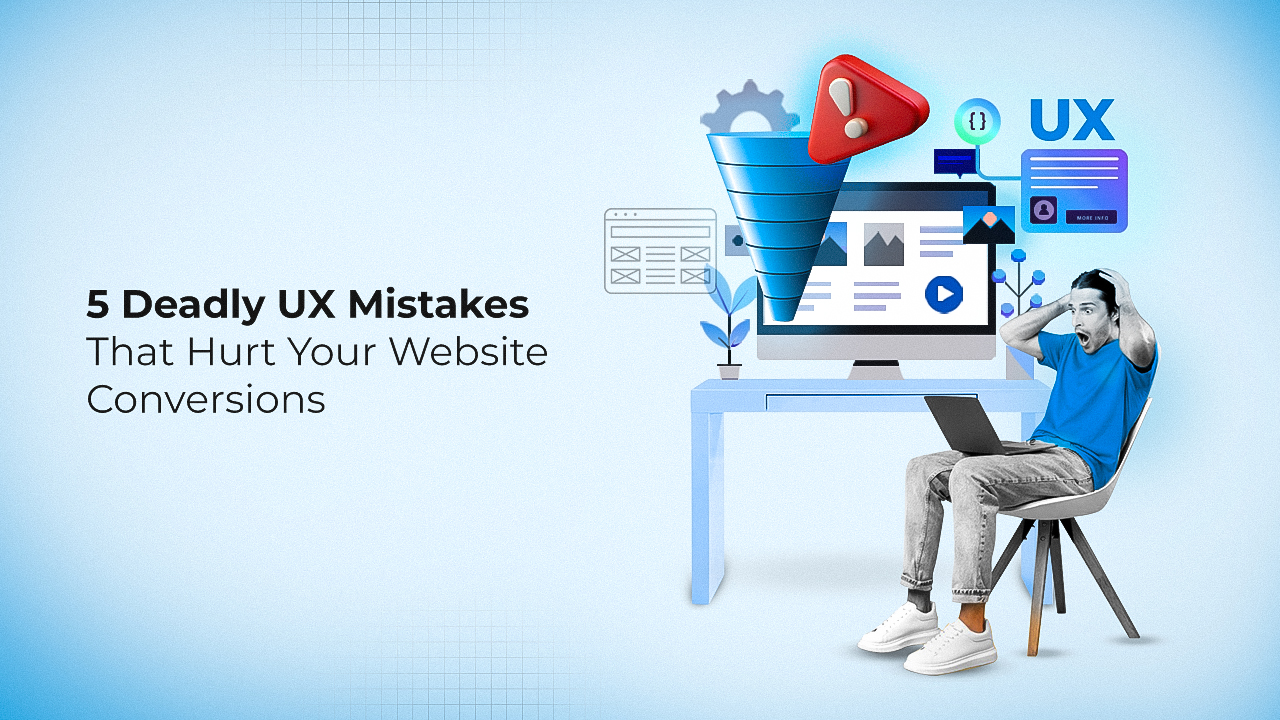
6 Secrets to Building High-Converting Real Estate Websites
Struggling to generate quality leads for your real estate business?
You may have a real estate platform that looks pretty sleek, and it may even get some traffic. But here’s the thing: the website isn’t doing its job if that traffic is not converting into serious leads or sales.
A lot of real estate businesses fall into this trap. They launch generic websites that aren’t built with the specific behavior and mindset of property seekers in mind.
It’s easy to overlook this when you are focused on listings, networking, and offline sales. The problem is, the moment you start thinking about scale, whether that’s across neighborhoods or cities, you’ll notice the cracks in your digital presence. And those cracks start with poor conversion.
High-converting real estate platforms are not just glorified digital brochures. They are built with intent. It could guide users towards booking a viewing, enquiring about a property, or signing up for updates.
When a website is too slow, cluttered, vague, or designed like a one-size-fits-all solution, you’re going to lose people. They will bounce off and find another site that gives them what they need—fast.
Real estate website development needs to be precise. If you’re serious about growing your business online, you need a platform that is tailor-made to how people search, decide, and act when looking for property.
This is not about trends. It is about understanding how buyers and renters behave online and making sure your platform responds to that with zero friction.
If conversions are slow or lead numbers are unpredictable, the solution isn not more ads or more listings, it’s building a smarter platform that’s actually designed to convert.
What Is a Conversion Rate on a Real Estate Platform?
In simple terms, the conversion rate tells you how well your platform turns visitors into leads or clients. It is the percentage of people who do something valuable on your website, like filling out a contact form, booking a visit, or signing up for alerts.
Conversion Rate = (Number of Conversions / Total Visitors) x 100
If 500 people visit your platform in a month and 25 of them fill out an inquiry form, your conversion rate is 5%. You will notice that this number is not left to chance on a high-converting real estate platform. It is intentionally designed and optimized.
Understanding the Needs of Today’s Real Estate Users
When someone lands on your real estate platform, they are not just clicking around for fun. They are there with a purpose, either to find a home, make an investment, or understand the market.
If your website doesn’t help them get closer to that goal, they will leave and not return. Below are the real, grounded expectations users carry with them today:
Instant, Reliable Search with Intuitive Filters
Most users will leave if they can’t find what they want in under a minute. Real estate platforms must provide fast, frictionless search with accurate filters for budget, location, bedrooms, property type, amenities, and more. But it does not stop there.
Users expect the site to remember their previous searches, pre-fill their preferred locations, and even surface listings similar to what they have viewed.
Visuals That Feel Like Reality
Just adding a few images is not enough. Users expect full-width image galleries, zoom-in floor plans, and virtual walkthroughs. Uploading a single grainy photo from the street will immediately drop trust.
On high-converting real estate platforms media is clear, well-lit, and complete. No blank photo slots, no “coming soon” placeholders. And if there is a property video tour or 360° view, that’s even better. The point is to build credibility and encourage user action.
Mobile Is the Main Platform, Not a Secondary One
Home buyers and sellers are highly likely to browse real estate listings on their phone. When we say a ‘mobile-friendly real estate site’ we don’t just mean a resized version of your desktop site. The buttons must be thumb-friendly.
The text must be readable. The whole flow, including search, shortlist and contact must be built for tap, not click. A poor mobile experience can significantly lower your conversion rate.
They Expect the Platform to Guide Them
The best real estate platforms act like helpful assistants. They suggest similar properties, offer filters that make sense, show nearby amenities, and give clear next steps: book a visit, talk to an agent, or save this listing. Platforms that leave users wondering what to do next are the ones that steadily lose business without realising the reason for it.
Upfront, Transparent Information
Vague, exaggerated property listings turn potential clients off. Today’s users want hard facts. Area in square metres, total price (not just EMI rates), year built, maintenance charges, availability, parking and so on. Listings that don’t give full transparency force users to leave or make calls they didn’t want to make. That causes friction for users. And friction lowers conversions.
Seamless, Real-Time Enquiry Options
There was a time when users would be fine filling out a contact form and waiting days for a reply. Those days are gone. The people who visit your website expect options like live chat, one-click call buttons, or quick WhatsApp messaging.
If your platform cannot offer some kind of near-immediate feedback, you will lose that lead. High-converting real estate platforms make it extremely easy for users to act, and even easier for agents to follow up.
How to Build High-Converting Real Estate Platforms
Let’s get into the core of what makes some real estate platforms stand out—and convert like clockwork. These are the six essentials that drive real results. If your platform lacks even one, you’re probably missing out on potential leads every single day.
1. Clear, Direct User Pathways
Everything on your site should be about getting users to take action. This means no distractions, no overwhelming options, and no clutter.
Just simple, intuitive paths: find a property, book a visit, ask a question. High-converting real estate platforms guide users like this naturally. Every click should lead somewhere useful.
Your homepage, your listings, and even your contact form need to have a purpose. You are not there to impress visitors with a pretty layout. The aim is to help them move from browsing to acting.
2. Fast, Search-First Architecture
Search is the backbone of any serious real estate platform. If users cannot find what they are looking for within seconds, they will leave.
When designing the architecture of high-converting platforms, the focus must be on the search feature. Autocomplete suggestions, saved filters, nearby listings—these aren’t bells and whistles; they’re fundamental.
Your search experience should be fast, flexible, and forgiving. Whether someone types “2BHK near Cambridge” or just clicks a region, they should be able to move forward instantly.
3. Personalized Alerts and Saved Searches
If someone visits your platform and does not find what they need, give them a reason to stay. Offer visitors the option of saving their search and signing up for alerts. When you personalize updates based on what they are looking at, you are offering relevant information without being annoying.
This is one of the quiet power tools behind high-converting real estate platforms. It allows you to stay on a user’s radar even after they leave your site.
4. Lead Forms That Actually Convert
Most real estate websites still use dull, generic contact forms. The truth is that users hate filling them out unless they absolutely have to.
Your forms need to be short, smart, and placed where they make sense. You can place them right after a property listing, not hidden in a contact page.
Make it easy to contact an agent, schedule a viewing, or request a call. High-converting real estate platforms often use micro-interactions. Elements like chat popups, one-click call buttons, or quick booking forms ensure potential clients don’t abandon the process midway.
5. Smarter Integration with IDX Broker
Real estate platforms that want to stay ahead are now leaning into advanced IDX (Internet Data Exchange) integrations. IDX Broker continues to be one of the most reliable tools in this space.
It pulls live, accurate MLS listings directly into your website, but its real value lies in what it lets you do beyond just syncing listings.
You can fully customize how listings appear, set up saved searches for returning users, capture leads using built-in forms, and even assign listings to agents based on geography or property type.
6. Real Analytics, Not Vanity Metrics
Real estate platforms should be designed to constantly learn from user behavior. Where do users abandon the process? Which listings get the most clicks? How far do people scroll?
You need real data not just likes, pageviews, or time-on-site, but solid analytics. Real estate website development enables businesses to track analytics like property views, lead form submissions, click-to-call actions, and scheduled visits, giving a clear picture of user intent and actual conversion performance, not just traffic numbers.
Future Trends in Real Estate Platform Development
Technology in real estate is moving fast, but what matters is what actually helps your business grow. Below are the trends you should watch if you plan to invest in high-converting real estate platforms.
-
AI-Driven Personalization
Smart sites will now change what visitors are shown depending on what they do. Suppose a person searches for 3-bedroom houses priced below $600K in Austin, Texas. In that case, the system will then alter all subsequent recommendations to align with this.
AI will similarly discover when visitors search and encourage them with recommendations during these time windows. This brings interaction and retention to a whole new level and drastically enhances real estate website conversion rates.
-
Smooth Real-Time Agent Availability
Soon, they will look for status information on whether an agent is online, ready for a brief video conversation, or can respond through live chat within 5 minutes. Platforms will sync agent calendars, show response times, and remove the old “submit form and wait” model. For entrepreneurs, this means creating a smoother handoff between the platform and the sales process.
-
Integrated 3D Maps and Neighborhood Context
Static maps will be replaced by interactive visuals. Buyers will hover over schools, zoom into parks, and view street-level surroundings.
Many users, especially those relocating or investing remotely, will base their decisions on how well they can visualize the area—before ever visiting. High-converting real estate platforms will integrate this seamlessly within listings.
-
Fully Self-Service Scheduling Tools
Users will want to book viewings directly from the listing page. No back-and-forth emails. Just a calendar synced with the agent’s availability. The platform will confirm, send reminders, and allow for virtual or in-person visit options. These tools will directly affect your ability to scale without adding headcount.
-
Hyperlocal Market Intelligence
Future platforms will highlight local data like price trends in the neighbourhood, crime statistics, planned developments, and recent sales—all tied to each listing. This helps users feel informed and in control, reducing hesitation and improving conversion rates. The more informed they feel, the more likely they are to act.
-
Built-In Mortgage and Loan Simulation
Users will soon expect a built-in financial calculator that shows real-time EMI estimates or mortgage eligibility, based on their local market.
No redirection to third-party tools. This feature will help users pre-qualify themselves and take one more step toward serious intent—all within your platform.
-
Voice Search and Navigation
As more people use smart assistants and voice search, your platform will need to be ready. Not just “show homes in Chicago” but searches like “3-bedroom homes with garden near schools in Denver.”
This matters especially for mobile users and voice-first interactions on smart devices. If your backend is structured correctly, this can be integrated easily and give you a competitive edge.
Case Study
Top-rated agency Webskitters has transformed the online presence of several real estate companies. In a recent case study on real estate PPC & Meta Ads campaign, Webskitters showcased their expertise by launching a meticulously planned, data-driven advertising strategy for The Burj and NK Realtors, significantly overhauling their lead generation process.
The group emphasized targeted audience approach and using high-intent keywords, as well as optimized ad creatives that adapt to user behavior.
Their end-to-end strategy involved A/B testing of ad copy, bid strategy tweaks, and landing page optimization to enhance user experience and engagement.
Consequently, Webskitters brought in a substantial rise in quality leads, enhanced online visibility, and significant web traffic growth.
Perhaps most importantly, their optimized PPC implementation resulted in lower conversion expenses and a substantial return on investment for The Burj.
Final Thoughts
If you’re serious about building a strong online presence in real estate, you can’t afford a platform that just “looks nice.” You need something that is built for action, built for users, and built for results. With Webskitters Technology Solutions you can build high-converting real estate platforms that are the result of thoughtful design, precise development, and real understanding of your market.
Whether you are revamping your current site or starting from scratch, now is the time to be intentional about your real estate website conversion strategy. Get in touch with our expert team, and let’s discuss your project.

 Ecommerce Development
Ecommerce Development 

![31 Latest Web Development Trends in 2023 [Updated] – Webskitters](https://www.webskitters.com/wp-content/uploads/2025/02/6391951191af02680036e736_31-Web-Development-Trends-Featured-Banner.jpg)











